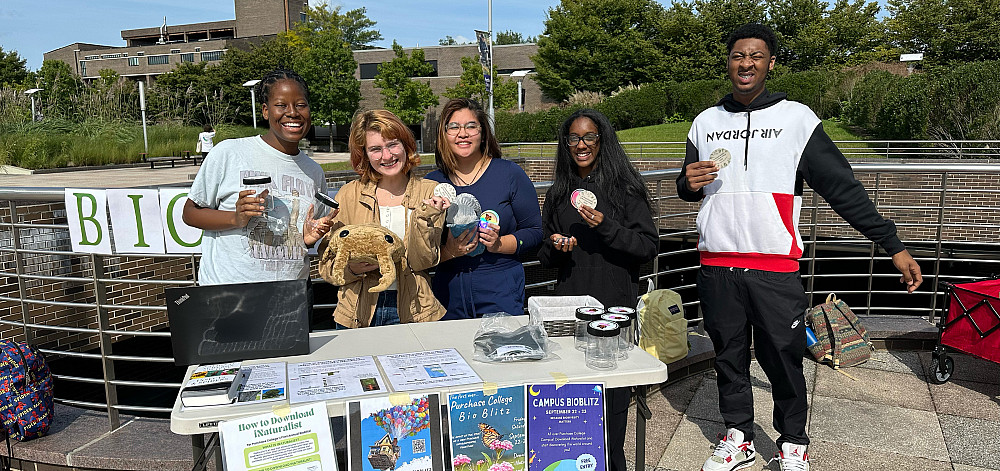First Annual BioBlitz Records 317 Different Species
A collaboration between the Environmental Studies program and the Sustainability Office sparked a search for species on the Purchase campus.
Biodiversity Matters
Over two days in late September, campus community members spread out into our 500 acres to see how many species could be documented in 48 hours.
Using the free smartphone app iNaturalist, participants logged observations of as many types of living things on campus as they could find—plants, fungi, animals, insects, etc.
Working in teams and independently, 35 participants documented 317 different species and 911 total observations during the event’s 48 hours. Check out their findings on iNaturalist.
The final results included 176 plant species, 66 insect species, 13 arachnid species, two amphibian species, nine bird species, four mammal species, and 32 fungi species.
The Environmental Studies Department offered prizes for most observations and most species identified. Environmental Studies Major Samantha DeTurris ’24 came in first with 193 observations and 103 different species, and Shannon DeCillis followed up with 127 observations and 69 different species.
Ryan Taylor, associate professor of environmental studies, led an expedition to learn about and document the tree species found on campus, while Allyson Jackson, associate professor of environmental studies, led groups to explore the plant and insect species.
Students in the Conservation Biology class were on hand to help participants download and explain the iNaturalist app.
What’s a BioBlitz?
National Geographic defines a BioBlitz as “an event that focuses on finding and identifying as many species as possible in a specific area over a short period of time.”
“We are a campus with abundant natural areas, and we want to use this BioBlitz as an opportunity to catalog everything that lives on our campus,” says Grace Afflerbach, Sustainability Coordinator. “We need to document what we have so we can protect important areas and track changes over time as they relate to climate change.”
Connecting the Field to the Lab
Professor Jackson’s students brought some insects captured into the lab for further investigation.
“We used iNaturalist in the field to get pictures of bugs, but we’re bringing some specimens back to the lab to get high-quality photos using microscopes,” Jackson says.
“While we felt bad collecting specimens, it can be hard to identify insects to species without those types of photos. Knowing the actual biodiversity of this area is essential. Now, we’ll have a solid record of what was present in 2023, which will help us manage and see changes in the future.”